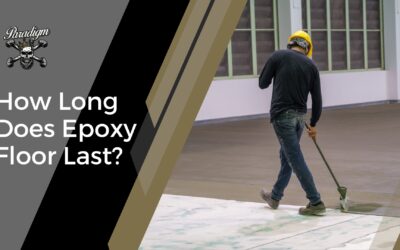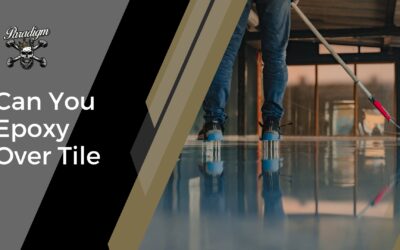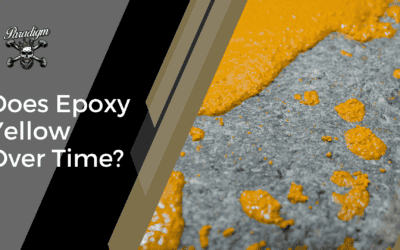Have you seen how beautiful concrete floors can be when polished? Polishing is not merely a routine maintenance task; it’s an intricate blend of science and artistry, capable of turning drab concrete floors into gleaming showcases of craftsmanship.
But beyond the obvious aesthetic improvements, polishing industrial concrete floors makes them resistant to wear and tear, capable of withstanding the foot traffic synonymous with industrial settings. Moreover, polishing improves light reflectivity within a space.
Polishing also contributes to a healthier, safer, and more productive environment for employees, which is why industrial clients choose this flooring option. If you’re considering it, this article is for you.
Table of Contents
Why Polishing Industrial Concrete Floor?
Buffing industrial concrete floors is a critical process that brings several significant advantages to industrial settings, making it a valuable investment for businesses. Here are compelling reasons why polishing industrial concrete floors is essential:
1. Enhanced Durability
Industrial environments often subject concrete floors to heavy machinery, foot traffic, and potentially corrosive substances. Polishing strengthens the concrete surface, making it more resistant to wear and tear, surface abrasions, and chemical damage. This durability extends the lifespan of the floor, reducing the need for costly repairs or replacements.
2. Improved Safety
In industrial settings, safety is paramount. Polished concrete floors can be treated with anti-slip coatings or sealants, reducing the risk of slip and fall accidents, even when exposed to liquids or contaminants. This added safety measure is crucial in areas where workers are handling hazardous materials or operating heavy machinery.
3. Easy Maintenance
Polished concrete floors are easier to clean and maintain. The smooth, polished surface prevents the accumulation of dirt and dust, simplifying routine cleaning tasks. This not only saves time but also reduces the need for harsh chemical cleaners, contributing to a healthier and more eco-friendly workplace.
4. Increased Light Reflection
The glossy finish achieved through buffing reflects more natural and artificial light, improving visibility within the industrial facility. This can be particularly beneficial in warehouses, factories, and production areas, reducing the need for excessive lighting and potentially lowering energy costs.
5. Resistance To Stains
Industrial environments are prone to spills and stains from oils, chemicals, and other substances. Buffed concrete can be sealed to create a barrier against these stains, making cleanup easier and preventing long-term damage to the floor.
6. Cost-Effective
While the initial investment in buffing industrial concrete floors may seem significant, it is a cost-effective solution in the long run. It eliminates the need for frequent floor repairs or replacements and reduces maintenance expenses.
7. Improved Appearance
A well-buffed concrete floor looks professional and well-maintained. This can positively impact the image of the industrial facility, whether for potential clients, partners, or employees.
Methods For Polishing Industrial Floors
Industrial floors endure constant wear and tear from heavy machinery, foot traffic, and various materials, and over time, they can lose their luster and become hazardous. To combat these challenges and revitalize the workspace, experts devise several methods for polishing industrial floors.
Here are some of the techniques behind the beautiful floors you’ve been seeing in industrial and commercial spaces.
1. Diamond Polishing
Diamond polishing is a highly effective and popular method for buffing industrial concrete floors, known for its ability to create stunning, mirror-like finishes and exceptional durability. Diamond is one of the hardest known materials, making it highly effective for grinding and polishing applications.
Process Overview
Surface Preparation: Before diamond polishing, the concrete surface needs thorough preparation. This includes cleaning the floor to remove any contaminants and, assessing the concrete’s condition, addressing any cracks or imperfections.
Coarse Grinding: The process begins with the use of coarse diamond abrasive pads. These pads are designed to remove the top layer of the concrete, leveling the surface and exposing the aggregate if desired. This initial grinding phase removes any blemishes, stains, or inconsistencies in the concrete.
Progressive Polishing: After the coarse grinding, progressively finer diamond abrasive pads are used. The process involves multiple steps, each with finer grit pads. This gradually refines the concrete’s surface, removing the scratches left by the coarser grits and bringing out a higher level of gloss and clarity.
Densifiers and Sealers: In some cases, chemical densifiers are applied to the concrete surface during or after the polishing process. Densifiers react with the concrete to create a harder, more durable surface. Sealers are then applied to protect the polished concrete from stains and spills.
Pros of Diamond Polishing
Exceptional Aesthetics: Diamond polishing can achieve an incredibly high level of gloss, clarity, and reflectivity, turning industrial concrete floors into visually striking and elegant surfaces.
Durability: It significantly enhances the durability of the concrete, making it resistant to wear, abrasion, and impact. This makes it well-suited for high-traffic industrial environments.
Low Maintenance: Once diamond-polished, the floors are relatively low-maintenance. They require minimal waxing or resealing compared to other flooring options.
Environmentally Friendly: Diamond polishing typically doesn’t involve the use of harmful chemicals or coatings, making it an environmentally friendly choice.
Cons of Diamond Polishing
Initial Cost: The equipment and diamonds used in diamond polishing can be expensive, leading to a higher upfront cost compared to some other methods.
Labor-Intensive: Diamond polishing is labor-intensive, and the process may take longer to complete, especially for larger areas.
Dust Generation: The process generates a significant amount of dust, which can be a concern for indoor environments. Effective dust extraction systems are essential.
2. Resin-Based Polishing
Resin-based polishing is another popular and effective method for buffing industrial concrete floors. It involves the use of diamond-impregnated resin pads to achieve a glossy and durable finish.
Process Overview
Surface Preparation: Similar to diamond polishing, the concrete surface must be thoroughly cleaned and prepared before resin-based polishing. This includes removing contaminants and addressing any cracks or imperfections.
Initial Grinding: The process begins with coarse resin pads, which, like diamond pads, are designed to remove the top layer of the concrete and level the surface. This initial grinding phase helps to expose the aggregate and create a uniform surface.
Progressive Polishing: After the initial grinding, progressively finer resin pads are used. These pads are impregnated with diamonds and a resin binder, which provides both grinding and polishing action. The steps involve multiple passes with increasingly finer grit pads to achieve the desired level of gloss and clarity.
Densifiers and Sealers: As with diamond polishing, chemical densifiers may be applied to harden the concrete during or after the polishing process. Sealers are also used to protect the polished surface from stains and spills.
Pros Of Resin-Based Polishing
High Gloss Finish: Resin-based polishing can produce a high level of gloss and clarity, similar to diamond polishing, making it a suitable choice for creating visually appealing industrial floors.
Versatility: This method is versatile and can be used on various types of concrete, including colored and dyed concrete. It can also be used to achieve different levels of sheen, from matte to high gloss.
Faster than Dry Polishing: Resin-based polishing is generally faster than dry diamond polishing because it combines the grinding and polishing steps into one, reducing the number of passes required.
Less Dust: Compared to dry diamond polishing, resin-based polishing generates less dust, making it a cleaner option for indoor environments. However, dust extraction is still important.
Cons Of Resin-Based Polishing
Residue Potential: If not properly executed, resin-based polishing can leave a residue on the concrete surface, which may require additional cleaning or rework.
Equipment and Material Costs: The resin pads and equipment used in this method can be expensive, although costs may vary depending on the specific products chosen.
Skill and Experience: Achieving optimal results with resin-based polishing requires skill and experience to avoid over-polishing or creating uneven finishes.
3. Use Of Various Abrasives
This method involves using a variety of abrasive materials, such as metal-bonded diamond tools, sandpaper, or abrasive brushes, to grind and refine the concrete surface.
Pros of Various Abrasives
Cost-Effective: Using various abrasives can be a cost-effective way to buff concrete floors, especially for smaller-scale projects.
Customization: Different abrasives can be selected based on the desired finish and level of abrasion.
Flexibility: This method allows for greater control over the degree of polish and can be adapted to different concrete conditions.
Cons of Various Abrasives
Limited Gloss: Achieving a very high gloss with this method can be more challenging compared to diamond or resin-based polishing.
Longer Process: Depending on the abrasives used, the process may take longer to achieve the desired results.
Maintenance Needs: Floors polished using this method may require more frequent maintenance and resealing.
Paradigm Concrete Does More Than Just Polishing
Polishing is more than just a surface-level enhancement; it’s a strategic investment that not only elevates the floor’s visual appeal but also reinforces its durability, sustainability, and overall performance. At Paradigm Concrete Finishes, we offer professional concrete floor polishing, maintenance, and more. Contact us today for a consultation and get the best value for your money.




